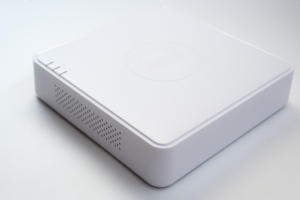- Homepage
- News
- Blogs & Articles
- The Role of Fire Alarms in the Internet of Things

The Role of Fire Alarms in the Internet of Things
Like it? Share it!
19 August 2019 by Andy Speake, National Technical Manager, Aico Ltd
What did we do in the days before the internet? Even the simplest tasks, like finding out train times, took forever. Now, it seems that nearly everything we need to know is available at our fingertips in a matter of seconds. Even the devices we have at our disposal are connected to the internet, from home entertainment through to bathroom fans, and across all swathes of our society, including commerce and industry. The Internet of Things, or IoT as it is mostly referred to, has arrived!
Whilst IoT in theory refers to anything and everything connected to the internet, it is more commonly used to describe objects and devices that are connected together on closed private internet connections and talk to each other for a purpose. This purpose could be to collate data, analyse it and learn from it and / or help with a specific task. It has the potential to improve a product or service, save time and money and even reduce its impact on the environment.
However, IoT is in its infancy and just because a device can be connected to the internet doesn’t mean it can ‘talk the same language’ as other devices. Even those that can be meaningfully connected to each other provide potential issues, including security; anything on the internet has the potential to be hacked.

When it comes to the fire industry, there’s a lot of buzz around the potential of IoT in relation to fire alarms, but the industry is taking an understandably cautious approach: when dealing with life saving products, rushing into new areas of technology is not an option. New technology must be tried and tested. People’s lives may well depend upon it.
So what IoT features are currently available in Fire Alarms and fire detection systems?
Wireless alarm interconnection tops the list as it has been around the longest and has proven extremely popular due to the speed of interconnecting alarms, the lack of disruption to the property and the flexibility it can bring to a system. Removing the need for hard wiring between alarms and devices on the system, proprietary RF protocols (including some with mesh configurations), Low Energy Blue Tooth, Z-Wave, Zig bee, amongst others, are used instead. Alarm interconnection is best practice – and a requirement under Scottish housing law - as it provides the earliest warning to the inhabitants of a building and therefore the best chance of escape. When one alarm detects fire, all alarms activate on the system, so can be heard throughout.
Remote monitoring is a feature that is rapidly gaining traction in the fire industry. People are increasingly buying into the idea of being able to monitor devices from afar; we’ve all seen the ads for ‘smart doorbells’ where you can see who is at the door on your mobile device, even if you’re half way round the world. Fire alarms are now available that can also be monitored on mobile devices and can receive messages from the alarm, including an alarm event; which detector has triggered so you know the location of the potential fire; low battery alerts; end of life/replacement date etc. This normally requires the alarms to communicate with a Gateway designed to process the signals or directly from the alarm to the WiFi router. Alternatively alarms can have GSM transceivers for direct connection to the mobile phone networks.
This is all good and well for individual homes, but it’s not a workable solution when you have multiple properties. For landlords, especially those in the social housing sector with many thousands of properties, remote functionality goes a step further. Still in its infancy, this technology allows landlords to not only remotely monitor the performance and status of devices in all properties, but also provide tenants with the ability to report issues, as well as to receive updates and notifications directly. Smart panels can improve tenant-landlord interaction, streamline maintenance management processes and automate required paper trails.
This is the here and now of IoT and fire alarms, but there is so much potential to be had and manufacturers are exploring a range of possibilities. One of these is the ability to predict a fire before it’s even happened. No crystal ball here (!), but a clever algorithm that can process data from alarms in real time and identify properties with an increased risk of fire, enabling preventative action to be taken such as calling Fire & Rescue Services. Other opportunities include the ability to connect fire alarms to other devices in a property. It’s already happening with sprinkler systems and warden call systems, so why not personal alarms, temperature devices, heating, gas, ventilation?
The arrival of the internet provided society with such treasures and wealth of information. IoT is the next step forward and has the potential to improve our lives further. The fire industry may be approaching it with caution, but embrace it we will!
-
Andy Speake
National Technical Manager, Aico Ltd
Related posts
-
Fireside Chat with Managing Director and Founder of RayFire Services Ltd, Ray Hope
25 March 2024
By Charlotte Brill, Content Marketing Executive
-
Ensuring fire safety in schools: responsibilities, developments, and training
06 October 2023
By Neil Budd, FIA Technical manager
-
On this day, forgotten disasters: Summerland disaster
02 August 2023
By Kirsty Lavell, Marketing Manager
